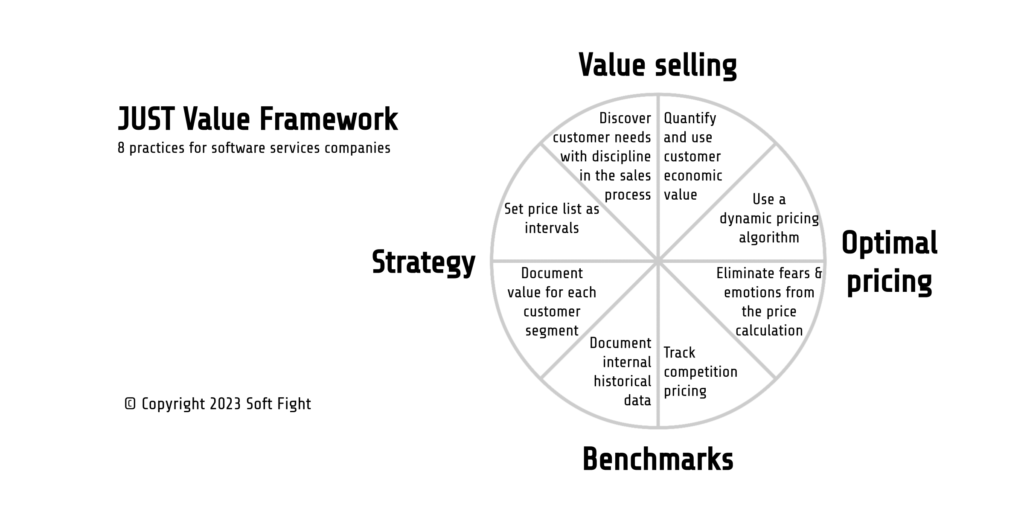I heard this a few weeks ago, while listening to the audio version of The Economist*.
“People want simple answers to complex questions”
So neat.
So logical.
So … simple.
The problem
It literally stopped me in my tracks.
I was driving.
I paused the audio, parked the car on the side of the road and pulled out my phone. I sent myself an email with this phrase, as I do every time I read, hear or think of something that could be useful in the future.
After writing the words, for a few minutes I was blocked, thinking this is a big problem for me, because I am terrible at it.
I don’t like simple answers.
I don’t believe in simple answers.
My first thought was ”oh, c**p!”.
One of our good university professors used to say that the right answer to most questions is “It depends”.
It made a lot of sense when he was explaining it. I firmly believe that now myself.
But if people want simple answers, what do I do?
The questions
The past 10 years of my professional life have revolved around trying to answer 3 seemingly simple questions:
- How can software companies charge higher prices?
- What does someone need to do to win most of the sales proposals they make?
- How can you sell software using minimum resources (in terms of time, tools, people)?
And here I am, after so many years, without a simple answer to any of these questions.
In fact, I only have complex answers to simple questions.
Because life is complicated.
The human mind is complicated.
The software industry is complicated: millions of people from every corner of the world, working with hundreds of programming languages and infrastructure options, for clients in hundreds of different industries and sectors of the economy, on hundreds of thousands of projects in any given year.
The answers
Many owners, managers and leaders of software companies ask themselves those same questions, almost every day.
They also have other dilemmas and challenges, around delivering quality, recruitment, company culture, operations management, long-term technology shifts and finding customers.
But I am only concerned with the commercial side of the equation.
More specifically, the sales process and pricing.
I don’t believe in simple answers.
But I do believe in using approaches, methods and frameworks that worked for others.
If everyone was trying to reinvent the wheel at every step, life would be really difficult, if not impossible.
Value selling and value based pricing have been used successfully as guiding principles in many industries, for decades.
For a time, I was struggling to see how they would work in the context of software services.
I can understand why the owner of a Slovenian software company said that “value based pricing sounds good in theory, but it doesn’t work in practice for software services”.
That’s not true.
Value based pricing does work in practice for software services.
So does value selling.
I have the numbers and the results to prove it.
I have also put a lot of effort into creating a method that can be implemented at scale.
The result of that effort is JUST.
The JUST Value Framework offers a clear, actionable, repeatable path forward for anyone looking to implement value selling and value based pricing in a software services context.
At the core of this methodology is a set of 8 practices:
Document value for each customer segment.
Set price list as intervals.
Discover customer needs with discipline in the sales process.
Quantify and use customer economic value.
Use a dynamic pricing algorithm.
Eliminate fears & emotions from the price calculation.
Track competition pricing.
Document internal historical data.
I am not using numbers or other ways to prioritize them, because all of them are equally important.
And each of them can make the difference on its own in some particular context.

Each of these practices comes with its own set of tools and ways to implement them.
Some of them need to be performed on a weekly basis, others monthly, while others involve activities and tasks done once a quarter or with the yearly business planning.
The roles involved and responsibilities also vary between the practices.
I have defined 5 broad categories of roles that are involved in the implementation of JUST: Owners, Management, Marketing, Sales, Delivery.
Who needs this? Why now?
Software companies can employ one of three basic commercial strategies:
- Cheap(er)
- Good enough (selling the right quality at the right price)
- Premium services, with high prices
Companies that want to use low prices as their main selling point don’t need any method or tool. They already have it: low prices.
For anyone else, JUST might be just what they need to build a sustainable, profitable business.
This is especially true for software companies in Central and Eastern Europe, which used to sell with low prices, but can’t do that anymore because of rising costs (higher salaries, higher taxes, general inflation, more complex business structures).
WHAT THIS MEANS FOR YOU
Some people want simple answers. Maybe most people want that.
If you are not like them. If you are the kind of person that doesn’t run when faced with big challenges.
And if you want to transform companies and teams for the better, try JUST.
It’s not a silver bullet.
It’s not going to solve all your problems.
It will, however, certainly help you book more projects, at higher rates, with less effort.
PS.
*The exact wording in the article was:
“Lots of people on both sides of the Atlantic crave simple answers to complex questions, and populists have provided them.”
Britain | A historical mystery
The strange case of Britain’s demise
A country that prided itself on stability has seemed to be in free-fall. Whodunnit?https://www.economist.com/britain/2022/12/12/the-strange-case-of-britains-demise

